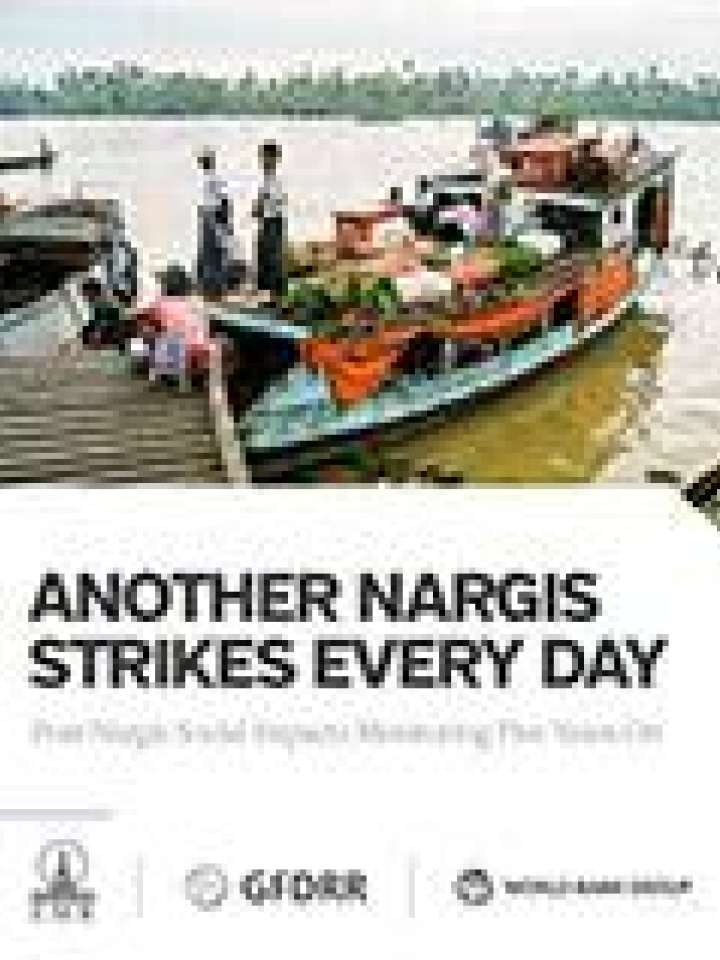Another Nargis strikes every day: post-Nargis social impacts monitoring five years on
Cyclone Nargis hit the Ayeyarwady Delta on May 2, 2008, and killed an estimated 140,000 people. Three rounds of Post-Nargis Social Impacts Monitoring (SIM) accompanied the post-disaster recovery period from 2008-10. By focusing on a limited set of villages, SIM provided in-depth information on how village life was changing post-Nargis and insights into how aid responses could best help Delta communities. This fourth round of SIM (SIM 4) provides a snapshot of village economic and social life five years after Cyclone Nargis struck. It assessed two areas:
- Socioeconomic conditions:
This examined the compound effects of Nargis and subsequent natural events on the key occupational groups of farmers, fishermen, and casual laborers. It looked at issues of livelihoods, debt and credit, and coping mechanisms.
- Social relations and institutions:
This explored how Nargis, the subsequent aid effort, and the evolving economic conditions affected social capital, the capacity for collective action, intra- and inter-village relations, and relations between villagers and their leaders.
SIM 4 placed particular emphasis on identifying external stresses subsequent to Nargis and understanding how these played out at the village level, especially with regard to other natural events with adverse impact. It also traced how some of the broader political changes since 2010 have projected down to the village level. SIM 4 was carried out in April–May 2013 and used the same methodology as the previous three rounds of SIM, involving in-depth qualitative interviews, focus group discussions, and key informant interviews with 895 villagers in 40 villages in the 8 townships across the Delta that had been most affected by the cyclone.
Explore further
